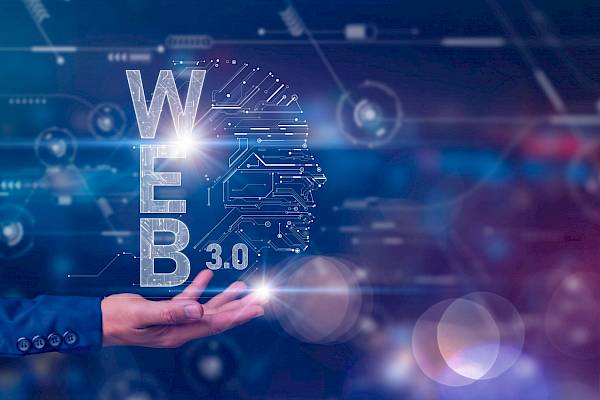The sudden demise of cryptocurrency FTX and the downfall of its CEO Sam Bankman-Fried in November 2022 has caused a stir of uncertainty in the already volatile crypto world. Demands for the industry to be regulated are inevitable to make the market safer.
For many people, the language of cryptocurrency and its underpinning technology blockchain is still very alien. So, before we dive into crypto and digital currency, let’s take a deeper look at blockchain, in the first of our ‘Target Tech Bytes’ series.
Over to the Oxford English dictionary for their definition.
blockchain
/ˈblɒktʃeɪn/
noun
- a system in which a record of transactions made in bitcoin or another cryptocurrency are maintained across several computers that are linked in a peer-to-peer network. "we can actually have a look at the blockchain and see evidence of what's going on"
The techy bit! So, what does it mean?
A technology that has the potential to change the way we do business, a blockchain is a distributed database that functions both as a digital ledger and a mechanism enabling the secure transfer of assets without an intermediary. It allows the digital exchange of units of value. Anything from currencies to land titles to supply chains can be converted into a token, stored, and then exchanged on a blockchain.
The database is a continuously growing list of ordered records called blocks. The blocks are linked using cryptography, each having a cryptographic hash of the previous block, a timestamp, and transaction date. The data within each block can’t be altered without changing of all previous and subsequent blocks. This dependency makes data tampering extremely difficult.
New transactions are validated digitally and added to the blockchain ledger. A community of people worldwide known as miners solve complex cryptographic hash puzzles to verify each block.
So where did blockchain come from?
The idea of blockchain was introduced by a person (or group of people) known as Satoshi Nakamoto in 2008. The first manifestation of blockchain was in 2009 with the Bitcoin blockchain.
There are four types of blockchain technology, all involving different levels of permissions:
- Public blockchain
- Anyone with an internet connection is free to participate in the activities of the public blockchain network
- Public blockchains are permissionless and completely decentralised
- Bitcoin is accessible to anyone, it’s an example of a permissionless/public blockchain
- Private blockchain
- Developed and maintained by a private organisation
- The organisation decides who can access the network and which permissions they have
- Private blockchains are partially decentralised, public access is restricted
- Companies such as Hyperledger provide private blockchain services
- Consortium blockchain
- Permissioned blockchains managed by a group of organisations
- This type of blockchain is more decentralised than private blockchains
- Software firm R3 has developed consortium blockchain solutions for use within the Financial Services industry
- Hybrid blockchain
- Controlled by a single organisation with a level of oversight performed by the public blockchain
- IBM Food Trust is an example of a hybrid blockchain. It traces the journey that food products take to get to their locations
Main gains and pains
As with all technology, there are gains and pains when implementing and using. Blockchain is no different, let’s explore some of its key advantages and disadvantages.
Advantages:
- Decentralisation – blockchain stores data across a network of computers, updating each copy as a new block is added. This means if one copy of the database is deleted, there are many more as a backup
- Immutability – it’s impossible to erase or amend recorded data within a blockchain compared to conventional databases that uses CRUD (Create, Read, Update, Delete)
- Security – blocks are stored chronologically and linearly; each new block is added to the end of the chain. If a hacker were to manipulate or alter a block, its identifying hash would change, yet the next block would still contain the previous hash so it would be simple to pinpoint the hacking attempt
- Transparency – as blockchain is decentralised, any member can verify data within the database instead of relying on a single intermediary. This creates public trust in the network
- Speed – By removing intermediaries and replacing manual processes in transactions, blockchain can handle transactions significantly faster than conventional methods
Disadvantages
- Environmental cost – Blockchain relies on encryption to provide security. So, to ‘prove’ a user’s permission, complex consensus algorithms must be completed. This requires large amounts of computing power
- Performance– blockchain database can be considerably slower than the conventional database as it carries out more operations
- High implementation cost and one size does not fit all – implementing blockchain is expensive and may not be as easy to ‘lift and shift’ from previous databases to a blockchain database
- Immutability – as well as this being an advantage, it can also be a disadvantage. If a mistake was made in a block, subsequent blocks would be impacted making it very time consuming and expensive to attempt to correct
- Lack of regulation – Whilst the FCA have oversight to check that crypto asset firms have effective anti-money laundering and terrorist financing procedures in place, generally the industry is not currently regulated
So, who’s using blockchain?
Interest in blockchain is gaining pace as the potential use for the technology in area’s other than cryptocurrency becomes apparent. There’s no doubt that it has the potential to disrupt a wide range of industries from Healthcare to Banking.
Companies like Salesforce and PayPal have started to use blockchain. Salesforce rolled out a closed pilot program in June 2022 for a new service called NFT Cloud. It allows users to manage NFTs (non-fungible token) for marketing and branding activities.
PayPal offer a service where users can buy, hold, and sell cryptocurrency using blockchain technology.
The Bank of England alongside HM Treasury are also in the initial stages of considering a UK Central Bank Digital Currency (CBDC), a “digital pound”. This is in response to the emergence of new technology and changing needs of individuals and businesses. Blockchain could be the underpinning technology should the digital pound be rolled out in the UK.
How could blockchain support your business?
There are several opportunities for using blockchain to support your business, examples include:
- Payment processing and money transfers. Transactions and settlements would take seconds, eliminate protracted processes, and reduce fees
- Data sharing. Blockchain could securely store and move data where required
- Healthcare. Blockchain could be used to store medical records in a single database making it more robust and secure whilst complying with regulations
The road to adoption!
With all emerging technology, there’ll be innovators, early adopters, an early and late majority, laggards and resistors!
Alongside our parent Tech Mahindra, who have already advanced into the blockchain space, we’re keen to explore emerging technology to understand how it can disrupt the Financial Services industry for the better.
Blockchain buzz words
Some buzz words used when talking about blockchain:
- Cryptography - a method for secure communication using code
- Decentralisation - the transfer of authority and responsibility from a centralised organisation, government, or party to a distributed network
- Ethereum – a public blockchain network
- Hash – a function that meets the demands needed to solve a blockchain calculation
- Immutability – inability to be changed
- Mining - the process by which blocks or transactions are verified and added to a blockchain using a Proof of Work (PoW) consensus mechanism
- Node – any computer connected to the blockchain network is referred to as a node
- Token – is an asset built on an existing blockchain
- Wallet – a storage location for digital assets (cryptocurrency) that has an address for sending and receiving funds. The wallet can be online, offline, or on a physical device
Sources




